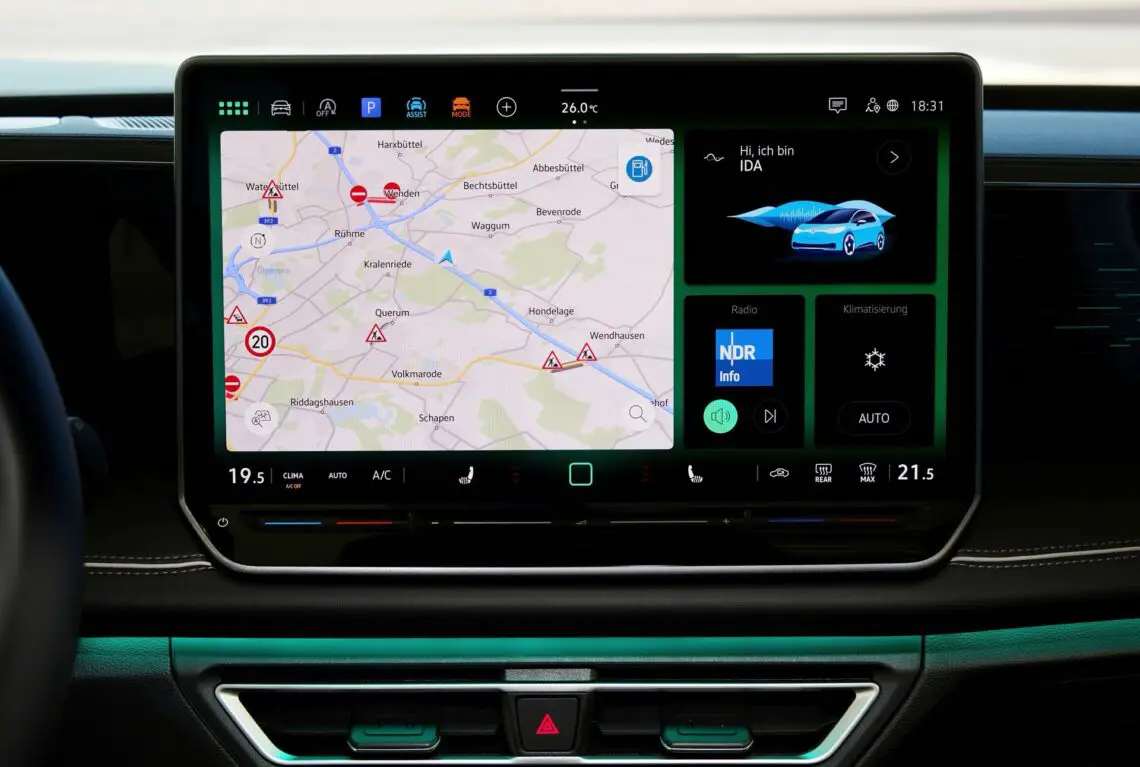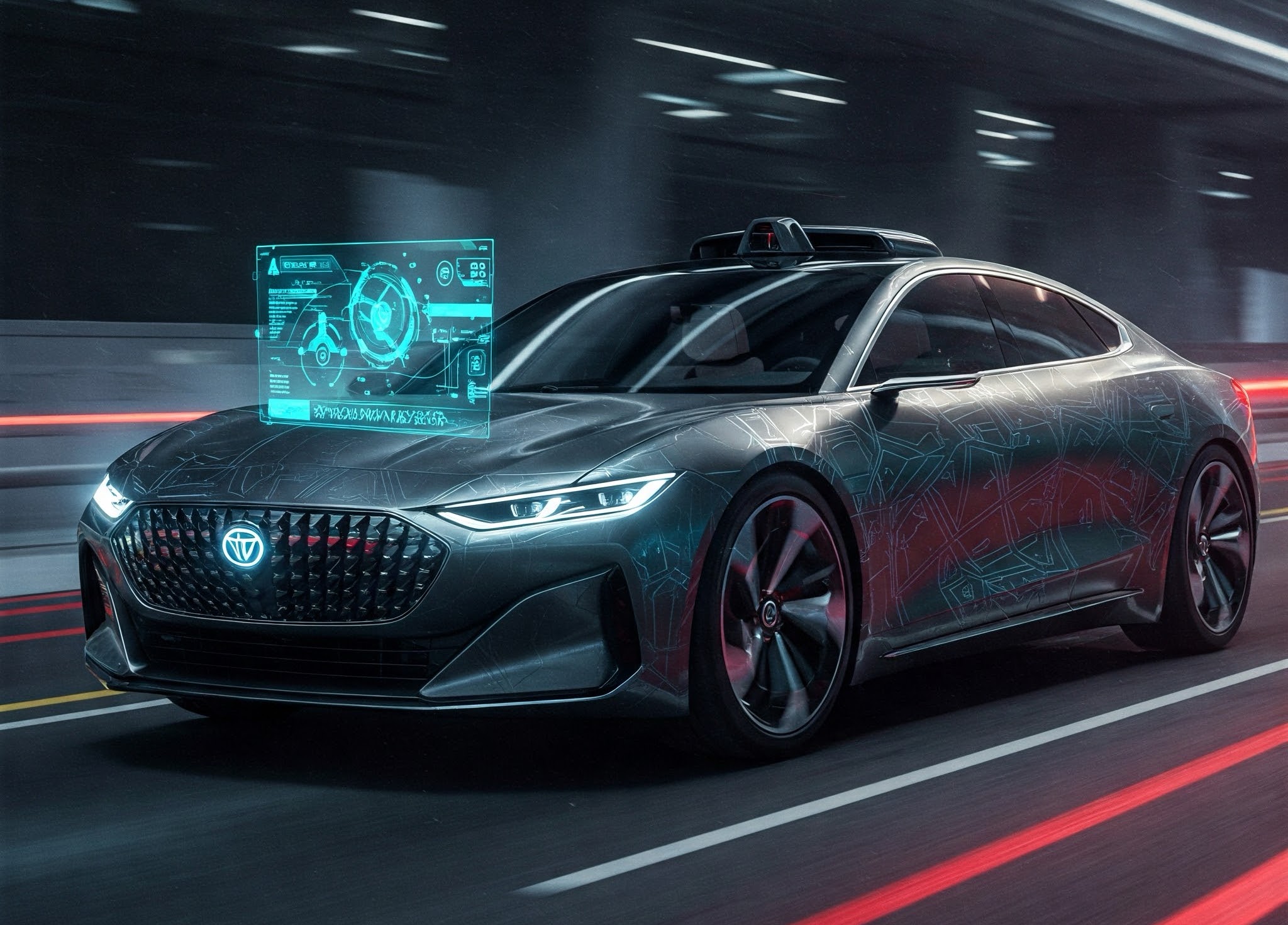The impact of AI on the auto industry in 2025
AI in car development and production
Designing cars was once a time-consuming process where engineers and designers spent years tinkering with every detail. Today, AI helps speed up that process. Algorithms simulate how a car behaves in collisions, analyze aerodynamics and calculate the efficiency of new materials. This allows manufacturers to respond faster to trends and stringent environmental requirements.
AI is also taking an increasing role in factories. Smart robots cooperate with human mechanics and learn from their mistakes. Defects in parts are detected before they cause problems. Production lines are becoming more efficient, leading to less waste and shorter delivery times.
AI in the car: smart assistants and voice control
Car companies are trying to make their vehicles as user-friendly as possible. AI-powered smart assistants, such as ChatGPT-like systems, are helping drivers by enabling natural conversations. “Hey car, where’s the nearest charging station?” is no longer a problem. The system not only looks up the answer, but also takes into account battery status and crowds at charging stations.
Such AI-driven assistants learn from the driver’s driving behavior. They adjust climate settings based on preferences, suggest routes based on driving behavior and can even estimate when someone is getting tired. Cars are increasingly becoming personal companions, rather than just a means of transportation.
Smart driving assistance systems and traffic analysis
AI is also playing a big role in driver assistance systems. Modern adaptive cruise control can already react to traffic, but AI algorithms are making this process smarter. Systems can not only make the car slow down or accelerate, but also assess complex traffic situations. For example: a system that better recognizes cyclists in a busy city and anticipates unexpected movements.
In addition, AI helps with traffic analysis. Consider systems that predict traffic flows and suggest alternate routes based on live data. Cities are using AI to set traffic lights more efficiently and reduce congestion.

Autonomous driving: the different levels
The dream of fully self-driving cars has not yet been fully realized, but AI has made great strides. Autonomous driving is classified into five levels:
Level 1: Basic assistance, such as cruise control and lane assist.
Level 2: The car can drive partially autonomously, but the driver must always intervene (e.g., Tesla’s Autopilot).
Level 3: The car can drive independently in certain conditions, such as on the highway.
Level 4: Fully autonomous driving in specific areas (think self-driving cabs in city centers).
Level 5: The car no longer has a steering wheel and can go anywhere without human intervention.
At the time of writing, level 2 and 3 autonomous driving is still mostly in progress. Some luxury vehicles are testing level 4 in controlled environments, but true self-driving cars for consumers are still some time away. The technology is there, but regulation and acceptance remain stumbling blocks. Moreover, the “human touch” is difficult to program. That is, instinctively responding to traffic situations.
AI and safety: fewer accidents?
One of the biggest promises of AI in the auto industry is reducing traffic accidents. AI can make decisions at lightning speed based on data, which can prevent many human errors. Think of automatic emergency stops when a child suddenly crosses the road or correcting a driver who is in danger of falling asleep.
Still, AI is not flawless. Assessing unpredictable human behavior remains tricky. For example, a driver may make eye contact with a cyclist to see who is taking the right of way. An AI needs to understand those kinds of interactions even better. Therefore, human supervision remains necessary for now.
AI and electric cars
Electric vehicles (EVs) also benefit from AI. Smart algorithms help optimize battery usage, which increases range. In addition, AI systems can plan routes based on charging infrastructure and driving behavior.
Another interesting development is vehicle-to-grid (V2G) technology. This allows EVs to feed energy back into the grid when needed. AI regulates this power supply based on supply and demand, keeping the power grid more stable.
AI and the second-hand market
Not only new cars benefit from AI. The used car market is also getting smarter. AI can predict from data which cars will hold their value and which models need more maintenance. Some platforms use AI to detect damages through photos, giving buyers a more reliable picture of a used car.
In addition, insurance is adjusted on AI data. Do you drive nicely? Then AI can calculate a lower premium. Do you often drive too fast or brake abruptly? Then you might get a warning or a higher premium.
AI and mobility services
Car ownership is no longer a given for everyone. AI helps optimize shared cars and mobility services. Self-driving cabs and smart algorithms that make carpooling services more efficient mean that fewer people need their own cars. This could lead to less traffic congestion and more efficient use of vehicles in the future.
Ethics and regulation
With all these AI developments, ethical questions are also emerging. Who is responsible if an AI feature causes an accident? How much control do we give AI over our driving? And what about privacy? Cars are collecting more and more data about their drivers, which is useful for personalization but also raises questions about data security.
Governments are working on regulations to manage AI in cars. These include mandatory software updates, data usage rules and establishing liability in accidents involving autonomous vehicles.
In brief
AI is impossible to imagine the automotive industry without. From smarter manufacturing processes to advanced driver assistance systems: AI is changing how we build, drive and own cars. Fully autonomous vehicles are still some time away, but AI is already helping with road safety, more efficient energy use and smarter mobility.
So we won’t have self-driving cars on every street corner by 2025, but technology will make driving safer, easier and maybe even a little more fun. And let’s face it: a car that remembers your coffee preference and makes a lame joke along the way is already a step in the right direction, right?

